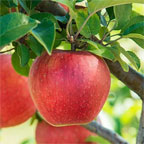- Q.What’s Wrong With My Daisy Bush? - My daisy bushes leaves have changed from a nice green colour to yellow in the ends and this is slowly ...
- Q.Montauk Daisy - How can I control the size of my large Montauk daisy bush? Can they be cut back like mums in ...
- Q.Michaelmas Daisies - Why do my pink flowering Michaelmas daisies have tall stems with dry brown dead leaves on the stems? They have ...
- Q.Daisy Won’t Bloom - We planted some white perennial Daisy plants last spring and they had beautiful blooms. This spring they grew in size ...
- Q.What Is Causing My Osteospermum Branches To Die Off, While A Few Stay Green And Bloom? - I have an Osteospermum that was here when I bought the house. It was a huge beautiful bush. It produced ...
- Q.Daisies - I have a daisy in my yard that I transplanted from my father's yard about 6 yrs ago. Up ...
- Q.Yellow Bush Daisies - How do you care for Yellow Bush Daisies?
Q.What’s wrong with my daisy bush?
My daisy bushes leaves have changed from a nice green colour to yellow in the ends and this is slowly taking over the whole plant. Half of the daisy buds are surviving, whilst the other half are dying. My bushes were put outside at the end of May using compost and a small amount of fish blood and bone. I have been watering them regularly. Thanks.
- A.
There are many things that could be causing this. Make sure the area is draining well and that you are watering deeply enough. If the area is not draining well, the roots could be drowning and you will want to cut back on water. If the water is not getting deep enough, the plant is not getting enough water.
Check the plant carefully for pests. You may want to go ahead and treat it with a pesticide and a fungicide. I like neem oil as it does both and is organic.
It may also just be transplant shock. This article can help with that:
https://www.gardeningknowhow.com/plant-problems/environmental/learn-how-to-avoid-and-repair-transplant-shock-in-plants.htmWas this answer useful?00
Q.montauk daisy
How can I control the size of my large Montauk daisy bush? Can they be cut back like mums in the spring as they are growing?
- A.
One of the most important aspects of growing these daisies is the spring cutting. It's a good to cut the plant back to the ground in midspring, June in most areas. If you make spring pruning an annual chore, you'll continue to have a nice bushy plant year after year, which will make its overall maintenance and growth easier to control.
Was this answer useful?00 Q.michaelmas daisies
Why do my pink flowering Michaelmas daisies have tall stems with dry brown dead leaves on the stems? They have nice pink flowers on the tops.
- A.
It is not unusual for this to occur in these Aster flowers.
In fact many gardeners refer to it as this flowers 'bad habit'.
The effects can be accelerated as the plants are winding down from the growing season.You can look for shorter varieties or use these flowers in a mass planting to disguise the issue.
Was this answer useful?00 Q.Daisy won’t bloom
We planted some white perennial Daisy plants last spring and they had beautiful blooms. This spring they grew in size and thickness and produced many buds but won't flower. The buds are turning brown and dying. The plant is thick and green. There some yellowing leaves at the base. We have watered and mulched and given them plant food. Not sure what else to do. Pics are included.
- A.
It could be that you are providing too much fertilizer, especially nitrogen fertilizer. Excessive nitrogen induces plants to focus on growing beautiful green foliage and not producing flowers, while phosphorus is the nutrient that is best for promoting blooms. Drought or excessive heat can also kill flower buds. You are already making sure to provide enough water, so maybe you could try providing shade to shield it from the heat (like by moving a tall potted plant over near the daisies).
https://www.gardeningknowhow.com/plant-problems/environmental/plant-not-blooming.htm
Was this answer useful?00 Q.What is causing my Osteospermum Branches to die off, while a few stay green and bloom?
I have an Osteospermum that was here when I bought the house. It was a huge beautiful bush. It produced many blooms after the heavy rains here in CA in 2015/2016. We were still on a drought watering restriction and I watched this large bush with branches reaching out and spreading nicely in the planter area start to go stiff and brown, leaves and branches and just start breaking off at the main stem. I started risking it and watering more, but all of it died except for one branch off the main stem about six inches up from the root ball. It was doing very well and today I noticed, again, a single dead branch with all the leaves stiff and hard and brown. What is wrong with this plant? Whether I water well or water sparingly it continues to go south in the summer months.
- A.
Fusarium is a true fungus,
and a common cause of crown rot along with other fungal species and sometimes the condition is linked to bacteria
and nematodes. When a plant is attacked by crown rot, symptoms appear quite quickly with discoloration of leaves
and wilting. The plant eventually dies as the disease effectively separates the plant from its rootsWas this answer useful?00 Q.daisies
I have a daisy in my yard that I transplanted from my father's yard about 6 yrs ago. Up until this year it has been healthy, blooming each Fall. I noticed the leaves looks shriveled, brown. Not sure what is going on with it. I have attached a photo, hopefully it is clear enough to give you an idea of what I am inquiring about. Any ideas?
- A.
This is a fungal infection. I am getting a lot of this at this time of year! Luckily, I believe that this particular one can be cured.
Apply DOLOMITIC lime and wettable sulfur to the area, and give it a few weeks. This will take care of the infection, and recondition the soil.
After you notice new growth, cut off any infected growth and burn or dispose of them very far away.
Was this answer useful?00 Q.Yellow Bush Daisies
How do you care for Yellow Bush Daisies?
- A.
Sure! We have just the article for you:
https://www.gardeningknowhow.com/ornamental/shrubs/african-bush-daisy/growing-bush-daisies.htm
Was this answer useful?10



